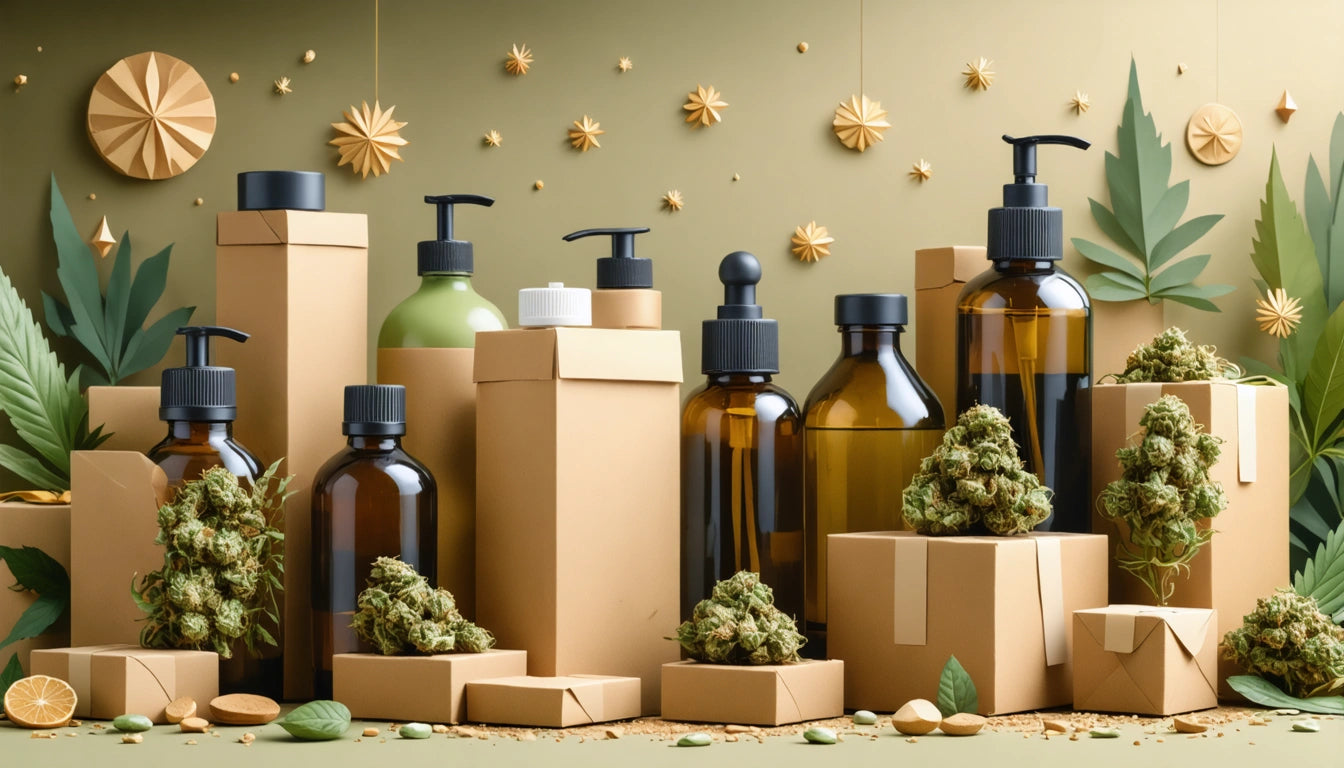Table of Contents
- Sales Data Analysis: The Foundation of Accurate Forecasting
- Calculating Packaging Ratios for Different Product Categories
- Accounting for Seasonal Trends and Market Fluctuations
- Understanding Supplier Logistics and Lead Times
- Inventory Management Systems for Packaging Materials
- Strategic Recommendations for Optimizing Your Packaging Supply Chain
Accurate forecasting of packaging needs is essential for cannabis businesses to maintain operational efficiency and cost control. With proper planning based on sales volume data, companies can avoid both costly overstock situations and potentially devastating stockouts that could halt production and sales.
Sales Data Analysis: The Foundation of Accurate Forecasting
Effective forecasting begins with thorough analysis of historical sales data. Cannabis businesses should track product movement by category, with attention to both unit volume and seasonal patterns. This baseline information serves as the primary indicator for packaging requirements.
Start by categorizing your products (flower, concentrates, edibles, etc.) and analyzing their individual sales patterns. According to packaging forecasting best practices, companies should maintain at least 12 months of historical data to identify reliable patterns and anomalies.
Key Metrics to Track:
- Weekly and monthly unit sales by product category
- Year-over-year growth rates
- Market share changes within your distribution area
- Promotional impact on sales volume
Once baseline data is established, implement a rolling forecast system that updates predictions based on the most recent sales information. This dynamic approach allows for adjustments as market conditions change.
Calculating Packaging Ratios for Different Product Categories
Each cannabis product category requires different packaging components and quantities. Understanding these ratios is crucial for accurate forecasting.
For flower products, consider that each pound of bulk cannabis typically yields different packaging requirements based on your retail strategy. For example, you might package in eighths, quarters, and ounces, each requiring different child-resistant caps and containers to maintain freshness and compliance.
Common Packaging Ratios by Category:
- Flower: Containers, caps, labels, humidity packs
- Pre-rolls: Tubes, multi-packs, labels, child-resistant mechanisms
- Concentrates: Small containers, silicone inserts, caps, labels
- Edibles: Food-grade barriers, child-resistant outer packaging, labels
For multi-component packaging, track each element separately to avoid shortages of critical components. As noted in this category-by-category guide, different products have unique packaging requirements that must be considered in your forecasting model.
Accounting for Seasonal Trends and Market Fluctuations
Cannabis sales often follow predictable seasonal patterns that directly impact packaging needs. Holidays, local events, tourism seasons, and even paycheck cycles can influence demand.
Analyze your sales data for recurring seasonal patterns and build these fluctuations into your forecasting model. For example, many dispensaries see increased sales around 4/20 celebrations, summer tourism peaks, and year-end holidays.
Seasonal Forecasting Considerations:
- Holiday sales spikes (4/20, New Year's Eve, etc.)
- Local events and tourism influxes
- Regulatory changes that might affect sales
- Competitor product launches or promotions
Incorporating these factors into your model helps prevent stockouts during high-demand periods. According to supply chain disruption prevention strategies, businesses should increase safety stock levels before anticipated high-demand periods.
Understanding Supplier Logistics and Lead Times
Accurate forecasting must account for supplier capabilities and limitations. Lead times, minimum order quantities (MOQs), and production schedules all impact when and how much packaging to order.
Establish clear communication channels with suppliers and understand their production constraints. As detailed in this guide on lead times, domestic suppliers typically offer shorter lead times but potentially higher costs, while international suppliers may require 8-12 weeks for delivery but provide cost advantages for larger orders.
Supplier Logistics Factors:
- Standard lead times for each packaging component
- Minimum order quantities and volume pricing tiers
- Production capacity limitations during peak seasons
- Shipping and customs clearance timeframes
Building these variables into your forecasting model helps prevent supply chain disruptions and allows for strategic ordering decisions.
Inventory Management Systems for Packaging Materials
Implementing robust inventory management systems is essential for translating sales forecasts into packaging orders. Modern cannabis operations benefit from software solutions that track both finished goods and packaging components.
Effective inventory management helps prevent both overbuying and stockouts. According to bulk ordering best practices, companies should establish minimum and maximum inventory levels for each packaging component based on usage rates, lead times, and storage capacity.
Inventory Management Best Practices:
- Implement par level systems with automatic reorder alerts
- Track packaging component usage against production schedules
- Document quality issues to adjust future orders
- Regularly audit physical inventory against system records
For multi-state operators, coordinating packaging across locations presents additional challenges. Cross-operation coordination strategies can help standardize forecasting methodologies while accounting for state-specific requirements.
Strategic Recommendations for Optimizing Your Packaging Supply Chain
Beyond basic forecasting, cannabis businesses should implement strategic approaches to packaging procurement that balance cost efficiency with operational flexibility.
Develop tiered supplier relationships that include both primary and backup vendors for critical components. This redundancy provides protection against supply chain disruptions while maintaining negotiating leverage.
Consider implementing vendor-managed inventory (VMI) programs for high-volume packaging components. Under these arrangements, suppliers maintain responsibility for monitoring your inventory levels and replenishing stock based on agreed-upon parameters.
Finally, establish a formal Standard Operating Procedure (SOP) for packaging procurement as outlined in this procurement SOP guide. A well-documented process ensures consistency even during staff transitions and provides clear guidelines for exception handling during supply chain disruptions.
By implementing these forecasting strategies and continuously refining your approach based on actual results, your cannabis business can optimize packaging inventory, reduce costs, and maintain the operational flexibility needed in this dynamic industry.











Leave a comment
All comments are moderated before being published.
This site is protected by hCaptcha and the hCaptcha Privacy Policy and Terms of Service apply.